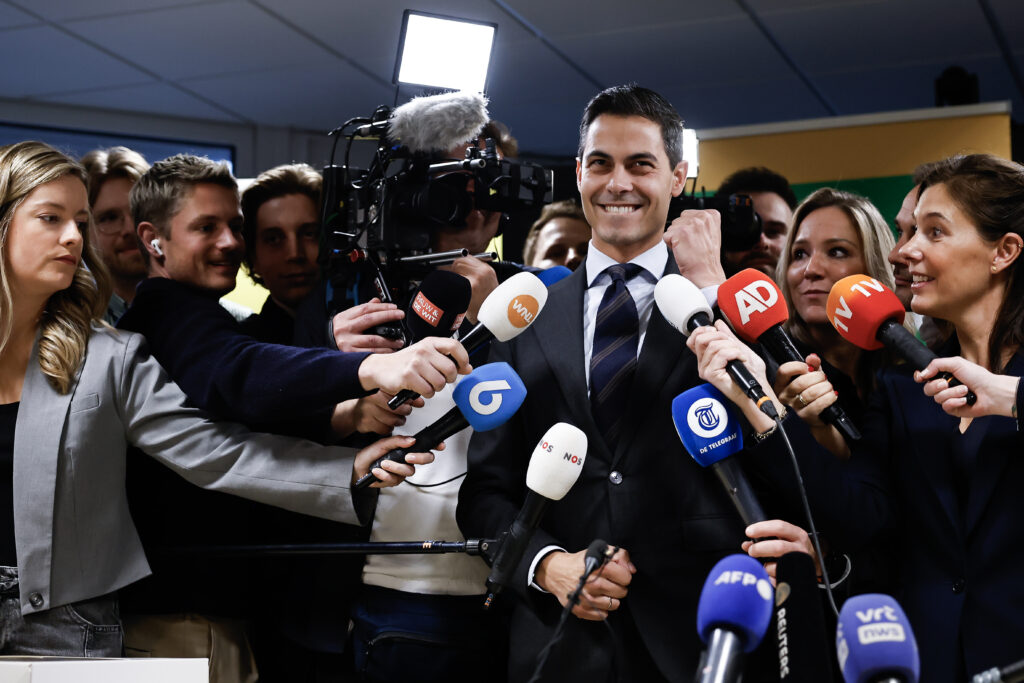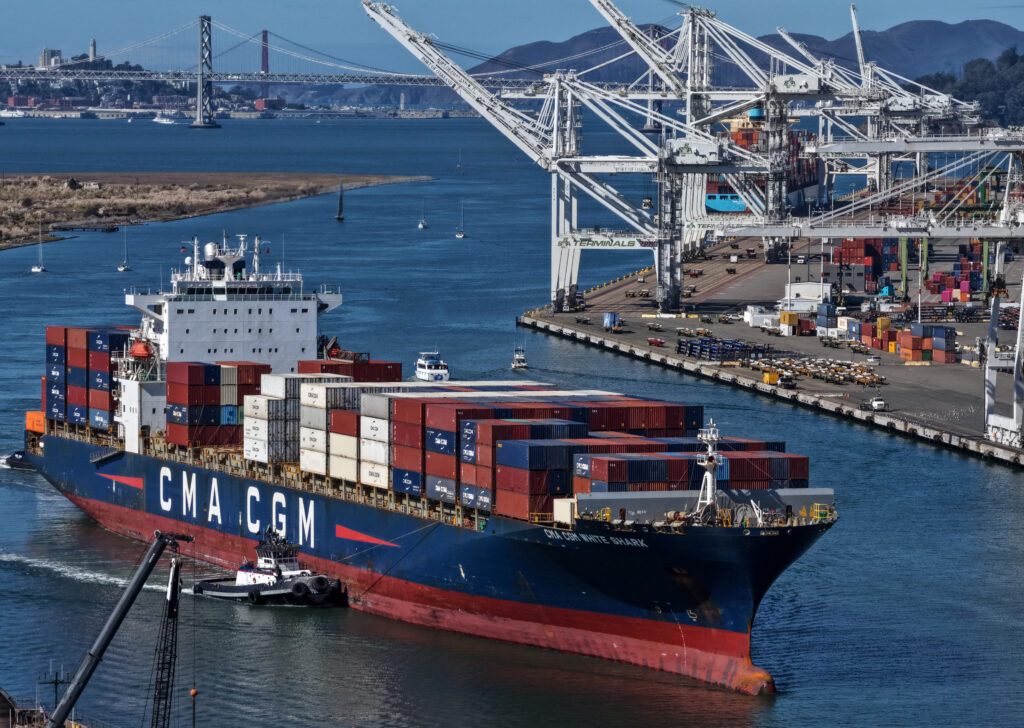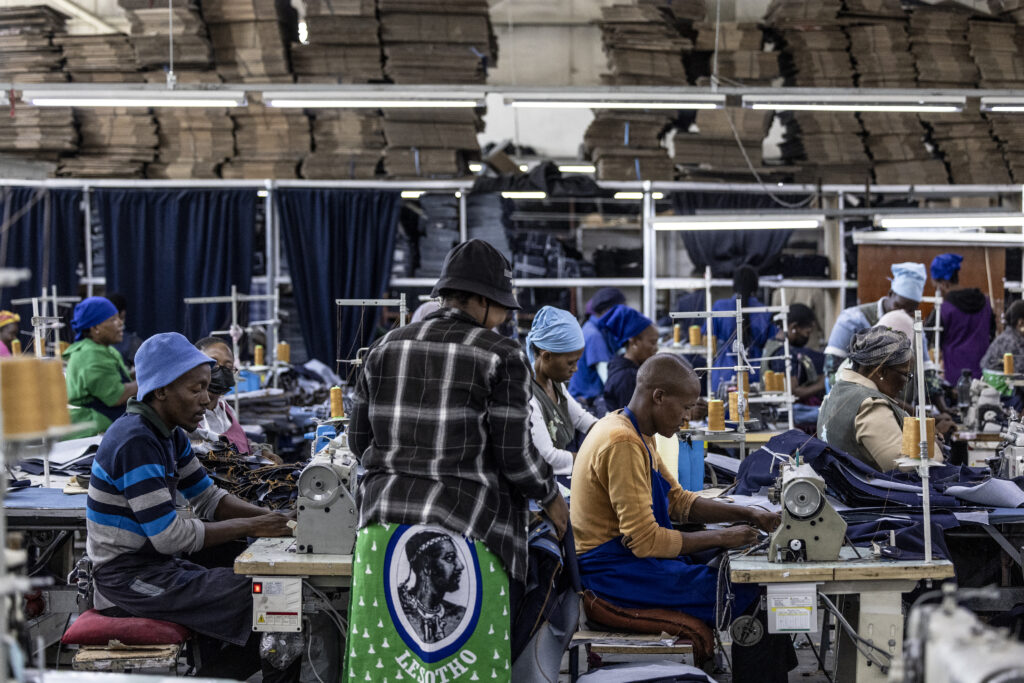Mali fuel crisis, insecurity spark foreign embassy warnings to leaveFri, 31 Oct 2025 14:56:17 GMT
Embassies in Mali urged citizens to depart the country immediately this week while the United States and United Kingdom withdrew non-essential staff, as a fuel blockade by jihadists upturns daily life and stokes fears of growing insecurity.Since back-to-back coups in 2020 and 2021, Mali has been ruled by a military junta that is struggling to …
Royaume-Uni: des militants écologistes qui avaient dégradé Stonehenge acquittés
Trois militants de l’organisation écologiste Just Stop Oil impliqués dans une action consistant à asperger de peinture le site préhistorique de Stonehenge en 2024 ont été innocentés vendredi par la justice britannique.Rajan Naidu, 74 ans, Niamh Lynch, 23 ans, et Luke Watson, 36 ans, avaient été inculpés pour avoir “détruit ou endommagé” un monument protégé et avoir causé “un trouble à l’ordre public”. Le 19 juin 2024, les deux premiers avaient projeté un nuage de poudre orange à l’aide de bombes aérosol sur des pierres massives disposées en cercle sur ce célèbre site du sud-ouest de l’Angleterre. Le troisième militant avait acheté le matériel utilisé lors de l’opération et véhiculé ses deux complices.L’action s’était déroulée la veille de la célébration du solstice d’été, qui donne traditionnellement lieu à un rassemblement à Stonehenge, un des sites mégalithiques préhistoriques les plus importants du monde, classé au patrimoine mondial de l’Unesco. Elle avait été revendiquée dans la foulée par l’organisation Just Stop Oil, qui réclame la fin de l’exploitation des énergies fossiles d’ici à 2030.Les trois accusés avaient plaidé non coupable. Ils ont fait valoir leur droit à la liberté d’expression et de manifestation et l’utilisation d’une peinture fabriquée à partir d’amidon de maïs afin de ne pas endommager durablement le site.Le nettoyage des pierres avait été rapide et avait coûté 620 livres (705 euros), a-t-il été révélé durant le procès.Jugés devant la cour criminelle de Salisbury, juridiction de Stonehenge, ils ont été acquitté par un jury après six heures de délibération.Leur avocate, Francesca Cociani a exprimé son “soulagement de voir que le jury a décidé de retenir leur droit à manifester pacifiquement”.”Je suis ravi du verdict mais j’ai l’impression que ces deux dernières semaines (de procès) ont été un gaspillage total d’argent public”, a réagi Luke Watson, un des activistes, cité dans un communiqué de Just Stop Oil.Après plusieurs années d’opérations savamment orchestrées et diffusées sur les réseaux sociaux, et de nombreux procès pour ses militants, l’organisation a décidé en mars de mettre fin à ses actions chocs.Elle avait notamment ciblé la National Gallery de Londres, où des militants ont aspergé de soupe les “Tournesols” de Vincent van Gogh, mais aussi des évènements sportifs très médiatisés comme le Grand Prix de Formule 1 de Silverstone ou le tournoi de tennis de Wimbledon.
“On peut battre les populistes” : le centriste néerlandais Jetten revendique la victoire électorale
Le dirigeant centriste néerlandais Rob Jetten a revendiqué vendredi la victoire dans une élection serrée face à l’extrême droite, affirmant que son succès surprise montrait que les mouvements populistes pouvaient être vaincus en Europe.A 38 ans, le chef du parti D66 au visage juvénile est en passe de devenir le plus jeune Premier ministre et le premier ouvertement homosexuel de la cinquième économie de l’Union européenne.Les élections législatives étaient suivies de près en Europe car elles devaient permettre d’évaluer l’ampleur de la poussée de l’extrême droite partout dans le continent, notamment au Royaume-Uni, en France et en Allemagne.M. Jetten a déclaré à l’AFP que son message positif et optimiste avait convaincu l’électorat néerlandais et lui avait permis de remporter la victoire face à M. Wilders, connu pour ses positions anti-islam et anti-immigration.”Je pense que nous avons désormais démontré au reste de l’Europe et au monde entier qu’il est possible de battre les mouvements populistes en menant campagne sur un message positif pour son pays”, a déclaré M. Jetten à l’AFP.L’agence de presse néerlandaise ANP, chargée de compiler et de diffuser les résultats du vote, a annoncé plus tôt vendredi la victoire du D66, estimant que l’extrême droite ne pouvait plus combler son retard.Avec encore une circonscription et les votes par correspondance des Néerlandais résidants à l’étranger à dépouiller, le centriste devance M. Wilders d’une très courte avance de 15.155 voix.Le décompte des votes par correspondance a déjà commencé, mais les résultats ne seront pas annoncés avant lundi soir au plus tôt.- “Au travail” -Traditionnellement, les expatriés néerlandais ont tendance à voter pour des partis plutôt du centre ou de la gauche.Lors des dernières élections législatives, en 2023, le D66 a devancé le PVV de près de 3.000 votes par correspondance.Les résultats ne seront officiels que lorsque le Conseil électoral les proclamera vendredi prochain, mais M. Jetten a déclaré qu’il n’y avait pas de temps à perdre.”Nous ne voulons pas perdre de temps inutilement, car les Néerlandais nous demandent de nous mettre au travail”, a déclaré ce sportif passionné.Mais son rival d’extrême droite lui a reproché de mettre la charrue avant les boeufs.”C’est le Conseil électoral qui décide, pas l’ANP. Quelle arrogance de ne pas attendre !”, a déclaré M. Wilders sur X.”Mais même si D66 devient le premier parti, le PVV ne laissera pas Jetten et ses semblables démanteler les Pays-Bas et s’opposera de toutes ses forces, dès le premier jour, à sa mauvaise gestion de gauche”, a-t-il ajouté.Commence maintenant le processus complexe de formation d’une coalition de partis pour forger un gouvernement, avec une majorité d’au moins 76 sièges sur les 150 que compte le Parlement.La voie privilégiée pour y parvenir semble être une coalition avec le CDA (centre-droit, 18 sièges), le VVD (libéral, 22 sièges), l’alliance de gauche Verts/Travaillistes (20 sièges).Le parti D66 de M. Jetten compte 26 sièges, mais ce nombre pourrait passer à 27 une fois tous les votes comptabilisés, ouvrant potentiellement de nouvelles possibilités de coalition.- Interrogations sur la coalition -“Je pense que les électeurs ont clairement exprimé, par ce résultat électoral, leur souhait d’une collaboration au centre”, a déclaré M. Jetten.Cependant, des interrogations subsistent quant à la capacité du VVD et des Verts/Travaillistes à travailler ensemble.Lors de la campagne, la dirigeante du VVD, Dilan Yesilgoz, a déclaré qu’une alliance avec les Verts/Travaillistes “ne fonctionnerait pas” et qu’elle souhaitait une coalition de centre-droit.Lundi, les Verts/Travaillistes éliront un nouveau chef suite à la démission de l’ancien vice-président de la Commission européenne Frans Timmermans.Les relations entre Mme Yesilgoz et M. Timmermans sont notoirement tendues. L’arrivée d’un nouveau chef Verts/Travaillistes pourrait donc faciliter un rapprochement.Bien que le soutien à M. Wilders se soit effrité, d’autres partis d’extrême droite ont réalisé de bons scores.Le Forum pour la Démocratie (FvD), parti nationaliste partisan d’une sortie de l’espace Schengen, a plus que doublé son nombre de voix. Il disposera de sept députés, contre trois actuellement.M. Wilders a exclu toute collaboration avec ce parti, le jugeant trop extrémiste.Le parti de droite radicale JA21, qui se décrit comme un “parti libéral conservateur pro-Pays-Bas”, est passé d’un à neuf sièges.
Rob Jetten, ex-athlète en course pour gouverner les Pays-Bas
Plus jeune, Rob Jetten était meneur d’allure, “lièvre”, pour les entraînements de Sifan Hassan, devenue championne olympique d’athlétisme. À 38 ans, il impose désormais son propre rythme à la tête de la politique néerlandaise.Le centriste revendique la victoire dans la course aux élections législatives, le plaçant en bonne voie pour devenir le plus jeune Premier ministre du pays.À l’instar de Sifan Hassan, vainqueur du marathon des JO de Paris grâce à une accélération fulgurante dans le dernier virage, le jeune politicien a parfaitement orchestré sa campagne.Avec son message positif et une énergie juvénile, il a réussi à remonter son parti encore situé à la cinquième place des sondages il y a un mois, après un sprint remarquable en fin de campagne.”Nous l’avons fait!”, a-t-il lancé à ses partisans en liesse lors de la soirée électorale, sur une estrade entourée d’une mer de drapeaux néerlandais et européens.Il a revendiqué une victoire de justesse face au leader d’extrême droite Geert Wilders, quelques milliers de voix seulement séparant les deux candidats.”Nous avons mené une campagne très positive car nous voulons éradiquer tout le négativisme qui règne aux Pays-Bas depuis quelques années”, a déclaré M. Jetten à l’AFP mercredi, jour du vote.”Je veux replacer les Pays-Bas au coeur de l’Europe car, sans coopération européenne, nous ne sommes nulle part”, a ajouté celui qui a gravi les échelons politiques à grandes foulées.- “Un intello” – Entré au Parlement à l’âge de 30 ans, il est nommé chef du D66 un an après, devenant le plus jeune à ce poste.La mayonnaise ne prend pas tout de suite pour le prodige, catalogué de “Robot Jetten” avec ses lunettes strictes et ses phrases toutes faites.”Le meilleur conseil que j’ai eu à ce moment-là, c’est : +explique ton histoire comme si tu étais assis à table avec des amis+”, a confié l’intéressé.Il abandonné alors les lunettes après une chirurgie laser des yeux et adopte une attitude décontractée et enjouée.Ensuite, les étoiles s’alignent : hasard du calendrier, il brille dans un populaire quiz TV de culture générale, enregistré au printemps mais diffusé lors des semaines précédant le scrutin.Rien d’étonnant sans doute pour quelqu’un qui, enfant, lisait deux journaux et regardait le journal télévisé du matin avant d’aller à l’école.”Un intello. C’est vraiment ce que j’étais à 12 ans”, admet le politicien, qui a grandi à Uden, dans le sud des Pays-Bas, avant d’étudier la science administrative à l’université Radboud de Nimègue (est).Avant d’entrer en politique, il a été conseiller pour ProRail, organisme public gérant le réseau ferroviaire néerlandais.- Approche pragmatique -M. Jetten, qui serait également le premier Premier ministre ouvertement homosexuel du pays, est fiancé à Nicolas Keenan, joueur international de hockey sur gazon argentin, depuis 2022. Le couple prévoit de se marier l’été prochain en Espagne.Enfant, le jeune Rob rêvait de devenir un sportif de haut niveau. “Mais en grandissant et en découvrant davantage mon identité, il était assez difficile pour moi de ne pas pouvoir m’identifier à des athlètes homosexuels de haut niveau”, a-t-il poursuivi.Plus tard, il s’est imaginé une carrière dans l’hôtellerie et la restauration, mais lorsqu’il s’éprend de la politique, son talent est vite repéré.Il devient ministre de l’Energie et du Climat entre 2022 et 2024, malgré son jeune âge et son manque d’expérience.Cependant, la popularité de son parti chute, le D66 passant de 24 sièges au Parlement à seulement 9 lors des élections de 2023.Deux ans plus tard, les observateurs attribuent son succès à une approche moins “woke”, moins alarmiste sur le plan climatique et, de manière générale, plus pragmatique.Dès le début de sa campagne, il exclut toute coalition avec le leader d’extrême droite Geert Wilders, le qualifiant de “plus grand tyran de la cour de récréation”.”En tant que démocrate, je ne vois pas comment je pourrais former une coalition avec lui”, a-t-il déclaré.
China’s suspension of rare earth controls applies to EU: official
The EU’s commissioner for trade on Friday said China’s one-year suspension on its restrictions of rare earth materials would apply to the bloc as well as the United States.”My understanding is that the agreement, which was found between the US and China in this matter, is ‘erga omnes’, so we should apply it to all and, of course, including the European Union,” Maros Sefcovic told reporters during a visit to Rome.Following discussions with the United States, China on Thursday said it would suspend certain export restrictions announced in October, including on rare earth materials, for one year.The controls on rare earths — a major sticking point in trade negotiations between US President Donald Trump and China’s President Xi Jinping this week — have rattled markets and snarled supply chains. Sefcovic, who met both with Italy’s Agriculture Minister Francesco Lollobrigida and Foreign Minister Antonio Tajani, said the EU was now having “high-level official talks on export controls” with China.”I will speak again with my Chinese counterpart very, very soon,” he added.- EU bloc bidding -China is the world’s leading producer of the minerals used to make magnets that are crucial to the auto, electronics and defence industries.Separate to the October restrictions, it has since April required licences for certain exports, a system Sefcovic said was not working. “We have not very positive experience with the issuing of export licenses for the rare earths,” he said.Only 50 percent of EU applications had been “properly processed” so companies received the needed rare earth materials, he noted.”It has direct implications on the production capacities of the companies in the EU.”After meeting Tajani at the foreign ministry, Sefcovic told reporters he envisioned a “common purchase of critical raw materials” by the EU. “We can do the bidding on behalf of the biggest trading bloc in the world, which is the European Union, and to get the critical raw materials for a better price,” he saidThe stockpiles would be “stored in Europe so we will not be under this permanent tension”.Tajani proposed that Italy could host such a storage site. – ‘Dumping’ dispute -Sefcovic also said the EU was backing Italy, which is facing punitive tariffs on exports of pasta to the United States, by showing its US counterparts that their “surprising” accusation of dumping was unfounded. Last month, the US Department of Commerce said it would impose provisional anti-dumping duties of over 91 percent on Italian pasta makers from January. This would be applied on top of the 15-percent tariff imposed on all EU imports.”This was a very surprising move from the United States towards the European Union, towards pasta producers,” Sefcovic said. He said he believed the commerce department “didn’t have proper or enough detailed information from some producers of pasta in Italy” so the EU, along with Italy and its pasta producers, was working to provide it.
Lesotho textile workers march against US-tariff job lossesFri, 31 Oct 2025 14:13:05 GMT
Hundreds of textile workers marched in Lesotho’s capital Friday in protest against massive job losses caused by US-imposed tariffs on exports.The Trump administration slapped the small southern African nation with 50 percent tariffs — the highest for any country — in April, before lowering the levy to 15 percent in July.Its textile sector — the …
Lesotho textile workers march against US-tariff job lossesFri, 31 Oct 2025 14:13:05 GMT Read More »
‘Hundreds dead’ in Tanzania post-election violence, says oppositionFri, 31 Oct 2025 13:48:35 GMT
Around 700 people have been killed in three days of election protests in Tanzania, the main opposition party said Friday, with protesters still on the streets in the midst of an internet blackout.President Samia Suluhu Hassan had sought to cement her position and silence critics in her party with an emphatic win in Wednesday’s election, …
AI giants turn to massive debt to finance tech race
Meta raised $30 billion in debt on Thursday, as tech giants flush with cash turn to borrowing to finance the expensive race to lead in artificial intelligence.On a day when Facebook-parent Meta’s share price plunged on the heels of disappointing quarterly earnings, demand for its bonds was reportedly four times greater than supply in a market keen to hold the social networking titan’s debt.The $30 billion in bonds scheduled to be repaid over the course of decades is intended to provide money to continue a breakneck pace of AI development that has come to define the sector.”(Mark) Zuckerberg seems like he’s got no limit in terms of his spending,” said CFRA Research senior equity analyst Angelo Zino.Zino noted that Meta takes in more than $100 billion a year, and that while Wall Street may be concerned with Zuckerberg’s spending it sees little risk debt won’t get repaid.”(But) they just can’t use up all their excess free cash flow and completely leverage it into AI.”The analyst wouldn’t be surprised to see Meta AI rivals Google and Microsoft opt for similar debt moves.Shareholder worry over Meta spending, on the other hand, is believed to be what drove the tech firm’s share price down more than 11 percent during trading hours on Thursday.Meta’s debt, however, drew flocks of investors despite rates for corporate bonds being at decade lows, noted Byron Anderson, head of fixed income at Laffer Tengler Investments.”Is there some worry about the AI trade? Maybe,” Anderson said. “But the revenue and profit coming off that company are massive.”If not for a one-time charge related to US President Donald Trump’s Big Beautiful Bill, Meta would have recorded $18.6 billion in its recently ended quarter.That amount of net income is more than General Motors, Netflix, Walmart and Visa profits for that quarter combined.- FOMO? -Anderson doubts that so-called fear of missing out on the AI revolution drove demand for Meta’s bond. “I don’t think this was FOMO,” he said.”People want good quality names in their portfolios at attractive levels, and this is a high-quality name — just like Oracle.”Business cloud application and infrastructure stalwart Oracle is reported to have raised $18 billion in a bond offering last month.According to Bloomberg, the Texas-based tech firm is poised to issue an additional $38 billion in debt, this time through banks rather than bond sales.Debt taken on by major AI firms is typically secured by physical assets, such as data centers or the coveted graphics processing units (GPUs) vital to the technology.Given the cash flow and physical assets of tech titans, risk is low for lenders. And the markets have been shaking off the possibility of an AI bubble that might burst.Meta just days ago announced creation of a joint venture with asset manager Blue Owl Capital to raise some $27 billion for datacenter construction.Meta and Oracle are also benefiting from recent moves by the US Federal Reserve to reduce the cost of borrowing.The trend toward debt is new for internet giants long accustomed to having ample cash flow to pay for what they want.Crucially, debt markets would not be as welcoming to AI startups such as OpenAI, Anthropic or Perplexity which have yet to turn profits.”I learned in my profession that if a company is not making profits and they issue (debt), that is a risky proposition,” Anderson said.The analyst reasoned that young AI companies like those will have to raise money through equity stakes — where the financier gets a stake in the company — as they have done so far.”I don’t know why they would go into the debt market,” Anderson said of such startups.”It would be too expensive for them,” he added, meaning the lenders would charge them much higher rates than the likes of cash cows like Meta.







